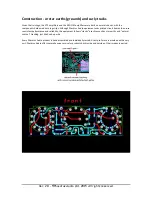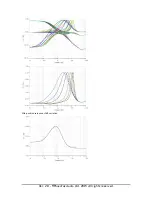
Ver. 2.0 - ©Phædrus Audio Ltd. 2015 All rights reserved.
Chapter 4 - Instructions for use
Typical connection set-up for the PHILTER
PHILTER
Application and connections
The PHILTER equaliser is a self-contained, line-level device. The loss due to the passive equaliser circuitry is made-
up in the included, internal line-amplifier. The figure below is a block-diagram, of the unit. The unit is connected
by balanced, earth-free connections on professional XLR connectors. Operating levels are covered below.
One word of warning: remember the line-amplifier makes up for the loss in the passive Q circuits when the
controls are central (and no boost is applied). In a passive equaliser, boost is actually provided by reversing the
loss of the equaliser over a range of frequencies. In other words, when boost is applied, bass frequencies are “un-
cut”. This means that, when large degrees of boost are applied, it may be necessary to reduce the signal level
sent to the PHILTER to stop it overloading.
Overload indicator
To prevent inadvertent clipping due to high levels of boost, the PHILTER contains a clip detect circuit which turns
the blue power LED red when the audio level is 3dB below peak. This indicator should only be allowed to flash red
occasionally in operation.
































